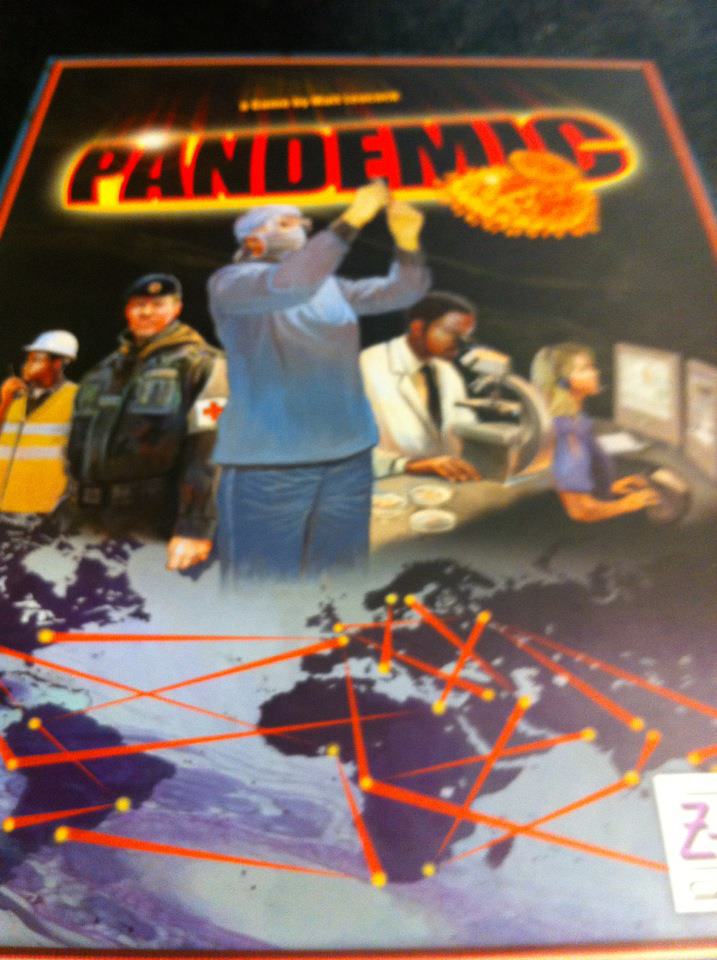Goodness, I had fun times tonight. A local science museum hosted a Pandemic! game night. (It’s a collaborative board game where you and friends try and contain and eradicate diseases). I think I have never sworn so much in such a short time.
Going to the game night meant I missed watching the latest GOP debate, but that’s fine by me. Now that I’ve seen First Things’s evaluation of the candidates a la Austen, I know nothing else needs to be said until the general.
A friend who watches politics very closely proposed the following unified field theorem of the GOP nomination race: The GOP is Elizabeth Bennett. Mitt Romney is Darcy, wealthy and powerful – on paper, he’s not just highly marriagable, he’s everything the family needs in a match for one of their daughters. But he’s boring and off-putting. Could she really be happy with him? Gingrich is Wickham; superficially he comes across (at least to some) as exciting, intelligent and someone who really understands her and what she wants. But he’s irresponsible and dishonest. Marriage to him would certainly be a disaster. His chief role is to remind Elizabeth how boring and off-putting Darcy is by comparison.
I offered a countertheory. Gingrich as the irresponsible Wickham, yes. But to my mind, Romney is Mr. Collins. Just like Darcy, Collins is a very attractive match on paper; just like Darcy, Collins comes across as boring and off-putting at first. The difference is that Darcy’s social ineptitude masked depths that Elizabeth would later delight to discover; with Mr. Collins, what you see is what you get. Remember the BBC version, where Elizabeth’s friend who married Collins describes how she’s very well taken care of, things are very pleasant, and oh by the way, she arranges every aspect of her home life to minimize the amount of time she sees her husband? Yeah, that’s what a GOP marriage to Romney would be like.
The commenters took up the challenge to continue casting, and the first explanation for Paul is particularly good.
Meanwhile, back in the realm of science, researchers were able to use evolutionary pressure to get single-celled yeasts to behave like quasi-multicellular organisms. Here’s how:
Dr. Ratcliff and his colleagues set up an experiment that might favor multicellularity in yeast. They reared lines of yeast, starting from a single cell, in 10 flasks of broth. They kept the flasks shaking for a day and then let the yeast settle. The scientists then took out a drop of the settled yeast cells and transferred it to a fresh flask, where the yeast could continue to grow. In this experiment, natural selection favored any new mutation that would let the yeast fall quickly. Yeast cells that were still floating high in the broth would not have a chance to be delivered to the next flask.
In a matter of weeks, Dr. Ratcliff noticed, the yeast was sinking fast, forming a cloudy layer at the bottom of the flasks. He put the yeast under a microscope and discovered that most of it was no longer growing as single cells. Instead, the broth was dominated by snowflake-shaped clusters of hundreds of cells stuck together.
These were not clumps of unrelated cells, he found. When he isolated individual cells and let them grow, they formed new snowflakes. Instead of drifting away, newly budded yeast cells remained stuck to their parents. By staying stuck together, these yeast clusters fell faster than individual cells.
I love how clever and uncomplicated this experiment is. Creative thinking has given us one of the best views yet of how life may have made a big leap.
In the middle of all the oohing and aahing over this result, Tyler Cowen put it together with the absence evidence for any other life in the universe to dare and had a very pessimistic read:
It suggests that “the filter” lies ahead of us rather than behind us. The difficulties of producing multi-cellular organisms have been one of the main responses to the Fermi Paradox (“where are they?”). If it’s not so hard after all, there must be some other obstacle to lots of self-reproducing von Neumann probes.
If you want to be ready for that big, antithetical to life filter, maybe you’ll want to keep an eye on the latest developments at Eliezer Yudkowsky’s rationality dojo. They’re looking for volunteers to expand their overcoming human bias curriculum. The stuff they’ve got on the sunk cost fallacy [at the link above] is pretty neat and mentally sticky.
And this week’s LongReads link comes from Wired, which profiled a group of literally underground French artists and tinkerers who hold film festivals in sewers and break into places to fix historic clocks.
This is apropos of nothing, but have I mentioned yet how much I enjoy anti-gravity yoga at the local gym?

For more Quick Takes, visit Conversion Diary!



















